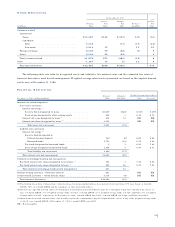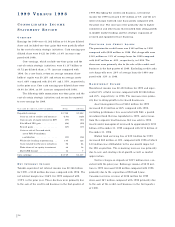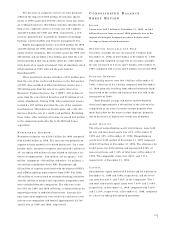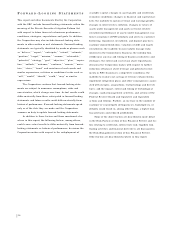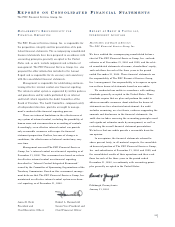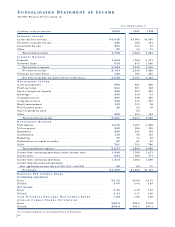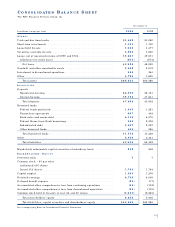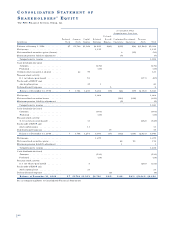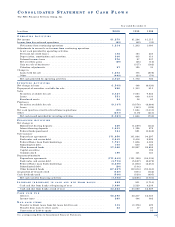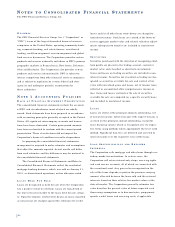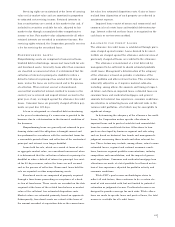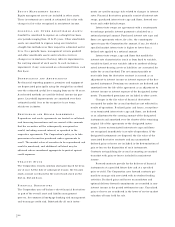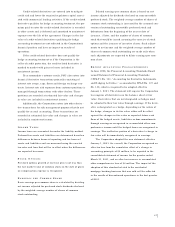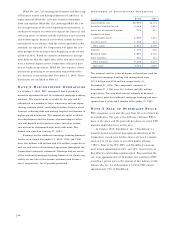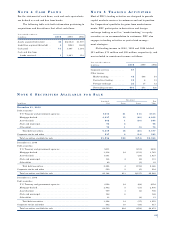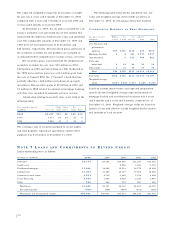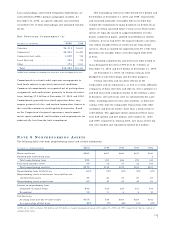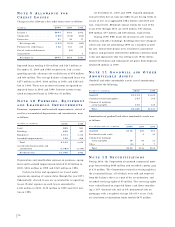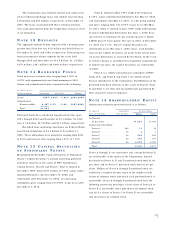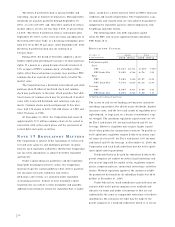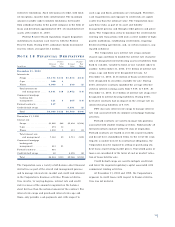PNC Bank 2000 Annual Report Download - page 68
Download and view the complete annual report
Please find page 68 of the 2000 PNC Bank annual report below. You can navigate through the pages in the report by either clicking on the pages listed below, or by using the keyword search tool below to find specific information within the annual report.
65
Servicing rights are maintained at the lower of carrying
value or fair market value and are amortized in proportion
to estimated net servicing income. Retained interests in
loan securitizations are carried at fair market value and, if
included in securities available for sale, adjusted to fair
market value through accumulated other comprehensive
income or loss. Fair market value adjustments for all other
retained interests are recorded in noninterest income. For
servicing rights retained, the Corporation generally receives
a fee for servicing the securitized loans.
NO N P E R F O R M I N G AS S E T S
Nonperforming assets are comprised of nonaccrual loans,
troubled debt restructurings, nonaccrual loans held for sale
and foreclosed assets. Generally, loans other than consumer
are classified as nonaccrual when it is determined that the
collection of interest or principal is doubtful or when a
default of interest or principal has existed for 90 days or
more, unless the loans are well secured and in the process
of collection. When interest accrual is discontinued,
accrued but uncollected interest credited to income in the
current year is reversed and unpaid interest accrued in the
prior year, if any, is charged against the allowance for credit
losses. Consumer loans are generally charged off when pay-
ments are past due 120 days.
A loan is categorized as a troubled debt restructuring
in the year of restructuring if a concession is granted to the
borrower due to a deterioration in the financial condition of
the borrower.
Nonperforming loans are generally not returned to per-
forming status until the obligation is brought current and
has performed in accordance with the contractual terms for
a reasonable period of time and collection of the contractual
principal and interest is no longer doubtful.
Loans held for sale, which are carried at lower of cost
or aggregate market value, are considered nonaccrual when
it is determined that the collection of interest or principal is
doubtful or when a default of interest or principal has exist-
ed for 90 days or more, unless the loans are well secured
and in the process of collection. Nonaccrual loans held for
sale are reported as other nonperforming assets.
Foreclosed assets are comprised of property acquired
through a foreclosure proceeding or acceptance of a deed-
in-lieu of foreclosure. These assets are recorded on the date
acquired at the lower of the related loan balance or market
value of the collateral less estimated disposition costs.
Market values are estimated primarily based on appraisals.
Subsequently, foreclosed assets are valued at the lower of
the amount recorded at acquisition date or the current mar-
ket value less estimated disposition costs. Gains or losses
realized from disposition of such property are reflected in
noninterest expense.
Impaired loans consist of nonaccrual commercial and
commercial real estate loans and troubled debt restructur-
ings. Interest collected on these loans is recognized on the
cash basis or cost recovery method.
AL L O W A N C E F O R CR E D I T LO S S E S
The allowance for credit losses is established through provi-
sions charged against income. Loans deemed to be uncol-
lectible are charged against the allowance and recoveries of
previously charged-off loans are credited to the allowance.
The allowance is maintained at a level believed by
management to be sufficient to absorb estimated probable
credit losses. Management’s determination of the adequacy
of the allowance is based on periodic evaluations of the
credit portfolio and other relevant factors. This evaluation is
inherently subjective as it requires material estimates,
including, among others, the amounts and timing of expect-
ed future cash flows on impaired loans, estimated losses on
consumer loans and residential mortgages, and general
amounts for historical loss experience, economic conditions,
uncertainties in estimating losses and inherent risks in the
various credit portfolios, all of which may be susceptible to
significant change.
In determining the adequacy of the allowance for credit
losses, the Corporation makes specific allocations to
impaired loans and to pools of watchlist and nonwatchlist
loans for various credit risk factors. Allocations to loan
pools are developed by business segment and risk rating
and are based on historical loss trends and management’s
judgment concerning those trends and other relevant fac-
tors. These factors may include, among others, actual versus
estimated losses, regional and national economic condi-
tions, business segment portfolio concentrations, industry
competition and consolidation, and the impact of govern-
ment regulations. Consumer and residential mortgage loan
allocations are made at a total portfolio level based on his-
torical loss experience adjusted for portfolio activity and
economic conditions.
While PNC’s pool reserve methodologies strive to
reflect all risk factors, there continues to be a certain ele-
ment of risk associated with, but not limited to, potential
estimation or judgmental errors. Unallocated reserves are
designed to provide coverage for such risks. While alloca-
tions are made to specific loans and pools of loans, the total
reserve is available for all credit losses.


